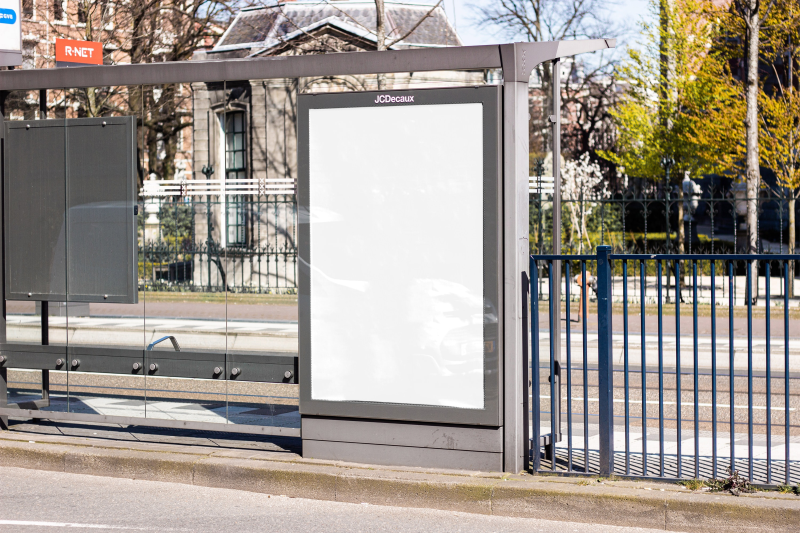Daily, what percentage of the population relies on mass public transportation? The transportation business has an extensive customer base. As a result, it is no surprise that digital signage is quickly becoming a standard feature at airports, subways, and bus stops throughout the globe.
It has been revolutionary to modify public areas and enhance the user experience by effectively utilizing digital signs. Digital transportation signage is a prime example of this. A digital display is a crucial tool for those who often use mass transit hubs such as subways, airports, railway stations, and so on since it helps them remain on schedule and get timely updates. If you want to provide real-time mass messages, this is one of the most efficient methods. The possibilities are limitless with the right digital signage software such as LOOK. Digital signage in transportation is no longer the future but the reality. Here is why:
It provides up-to-the-minute service updates
Will you offer us a hand? Every gift, regardless of size, fuels our future.
Your critical contribution enables us to maintain our independence from shareholders or wealthy owners, allowing us to keep up reporting without bias. It means we can continue to make Jewish Business News available to everyone.
You can support us for as little as $1 via PayPal at office@jewishbusinessnews.com.
Thank you.
Who hasn’t had to cope with inexplicable and unexpected delays or alterations on a particular route in the public transportation community? You can expect that there may be delays and disruptions on the city’s extensive network of public transportation lines. However, it doesn’t follow that public transportation systems can’t do more to alleviate tension when these situations arise.
Luckily, it can lessen surprise service changes or outages with notice located within the station, shelter or vehicle. When a service is out of order, travelers may find it helpful to get updates on the status of the network on the displays. Passengers may benefit from such a shift, but it may also help relieve congestion on the afflicted line once it is back in operation.
Deployment in wayfinding
A visitor to an airport or train station need to know where they are going the first time they arrive, so good signage is essential. Suppose you multiply that by hundreds or thousands of people that come through the doors. In that case, the displays utilized for this information may be an incredible investment compared to the cumbersome enormous banners and stand-up signs.
Arrivals, baggage claims, taxis, and customer service are just a few examples of places where travelers may see stale wayfinding signs. They can show information about popular local attractions, restaurants, shops, and hotels on airport digital signs.
Facilitating Self-Check-In kiosks
Self-check-in kiosks are becoming more and more commonplace. Interactive kiosks allow passengers to scan their passports, pick their seats, and print out their tickets and luggage tags without contacting a human salesperson. It is a convenient option if you are a regular traveler and don’t want to wait in extensive lines.
Lowering the amount of time that employees spend working to improve operations
Many routine customer service chores that take up employees’ time may be automated using digital signs for public transportation. There is a lot to do to maximize the time spent by airport workers, whether they are helping passengers figure out what gate they need to be at to catch their flight or calling a taxi for someone who needs a ride. Travelers may use digital displays to get the information they need. Employees will be able to focus on other duties that make greater use of their abilities. Workload reduction and increased job satisfaction will result from this change.
Workers won’t have to bother updating other signs and information in the workplace. They are costly and time-consuming to maintain static information boards. A few mouse clicks are all it takes to change the material on digital signs.
Widgets, which provide real-time updates on weather and commute times, may also enhance the software’s usefulness. Additional information requests from travelers will not burden workers.
Improving the waiting areas
If a consumer is engaged while waiting in line, they will perceive their wait time to be shorter, which is why digital signage apps may be utilized to keep them interested while waiting for planes or trains. A rise in airport security procedures has led to longer lines at security checkpoints throughout the world once again. Screens are utilized to show airport branding and marketing messages in addition to the regulatory information.
More mass transportation networks will use technology to engage with passengers and improve their transit experience in the future. Digital signage is poised to play a crucial part in this continuing transformation due to its high aesthetic appeal, variety of purposes and ease of usage. It might be a reality, but the future is even more promising for digital signage in transit.




